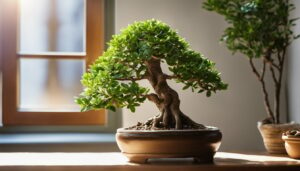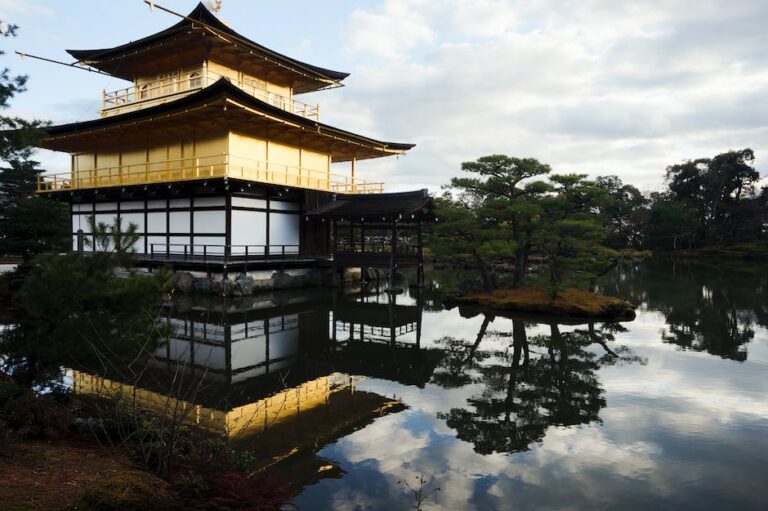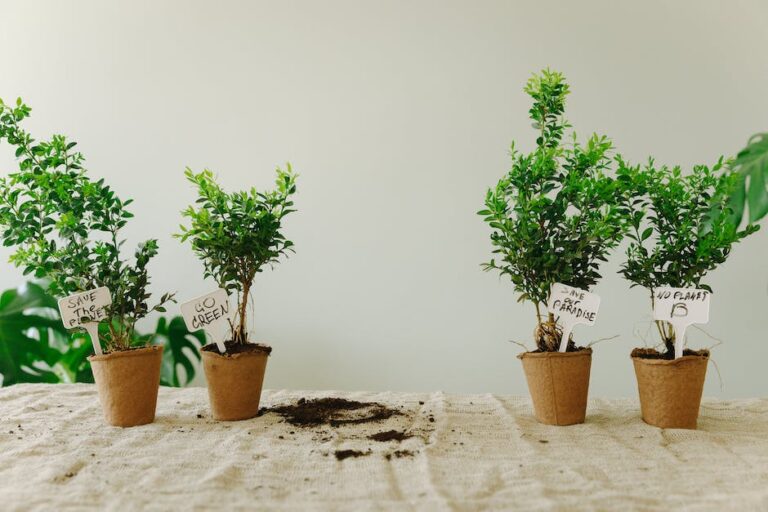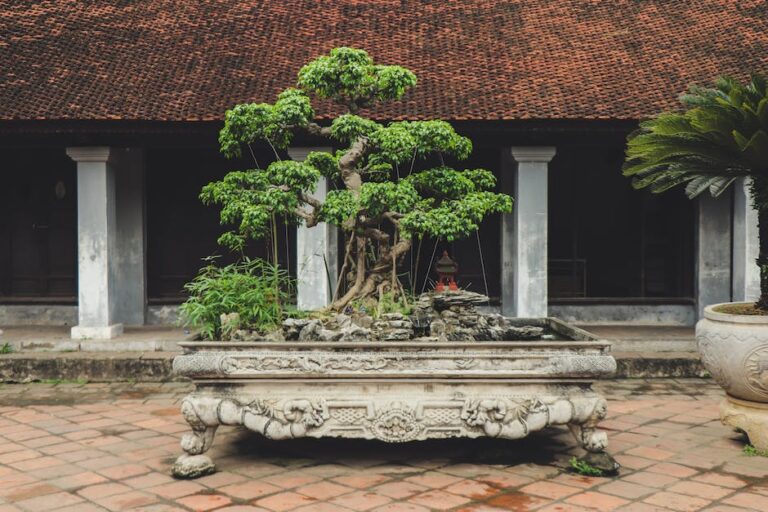Are Real Bonsai Trees Expensive
Looking to add a touch of nature to your home? Discovering the world of real bonsai trees may  be just what you’re looking for.
be just what you’re looking for.
But before diving in, you may be wondering, ‘Are real bonsai trees expensive?’ Well, let’s explore this fascinating art form together.
By understanding the factors that affect their price, the cost of authentic bonsai trees, and where to find affordable options, you’ll be equipped to make an informed decision and invest in a high-quality addition to your space.
Key Takeaways
- The price of real bonsai trees is influenced by factors such as size, age, species, and the time and effort put into shaping and maintenance.
- Older bonsai trees and those of certain sought-after species tend to have a higher price tag.
- Bonsai trees with intricate branches, foliage, and roots are generally more expensive.
- The quality and craftsmanship of the pot and display stand can also affect the overall price of a bonsai tree.
Factors Affecting the Price of Real Bonsai Trees
Factors like size, age, and species can all affect the price of real bonsai trees. Larger bonsai trees are generally more expensive than smaller ones because they require more time and effort to shape and maintain. Older bonsai trees are considered more valuable due to the years of care and dedication that went into their development. Certain species of trees are more sought after than others, which can drive up their price.
To buy real bonsai trees at a reasonable price, consider purchasing from reputable nurseries or bonsai clubs. They often offer a wider selection at more competitive prices. It is also important to educate yourself about the specific species and characteristics of the bonsai tree you are interested in. This will help you make an informed purchase.
Understanding the factors influencing bonsai tree prices is crucial in determining the cost of authentic bonsai trees.
Understanding the Cost of Authentic Bonsai Trees
To truly grasp the price of genuine bonsai trees, you’ll have to consider various elements. Here are some factors that contribute to the cost of these exquisite plants:
- Age: Older bonsai trees are more expensive as they require years of meticulous care and shaping to reach their desired form.
- Species: Certain species, like Japanese Black Pine or Juniper, are highly sought after and therefore come with a higher price tag.
- Aesthetics: Bonsai trees with intricate and well-developed branches, foliage, and roots are more expensive due to the skilled craftsmanship involved in their creation.
- Pot and Display: The quality and craftsmanship of the pot and display stand can significantly affect the overall price of the bonsai tree.
Owning a real bonsai tree comes with numerous benefits. These small yet captivating plants bring nature indoors, creating a sense of tranquility and beauty. They also teach patience, as caring for a bonsai requires regular maintenance, including watering, pruning, and providing proper sunlight. With the right care, a real bonsai tree can live for generations, becoming a cherished heirloom.
Price Range of Real Bonsai Trees in the Market
If you’re in the market for an authentic bonsai, you’ll find a wide range of prices to fit your budget. Real bonsai trees can vary in cost depending on factors such as age, size, species, and the level of expertise involved in their cultivation. To help you understand the average cost of real bonsai trees and determine their value, here’s a table outlining the price range based on these factors:
| Age | Size | Species | Average Cost Range |
|---|---|---|---|
| Young | Small | Common | $50 – $100 |
| Mature | Medium | Exotic | $200 – $500 |
| Ancient | Large | Rare | $1,000 – $10,000 |
| Centuries | Extra-Large | Endangered | $10,000+ |
It’s important to note that the value of a real bonsai tree goes beyond its monetary cost. Factors such as the tree’s health, aesthetics, and cultural significance also contribute to its overall value. So, when determining the value of a real bonsai tree, consider both its price and its unique qualities.
Investing in High-Quality Real Bonsai Trees
Investing in high-quality real bonsai trees can be a worthwhile endeavor for collectors and enthusiasts alike. These miniature trees, carefully cultivated and pruned, can bring a sense of tranquility and beauty to any space. To help you make the most of your investment, here are some popular bonsai species and maintenance tips for real bonsai trees:
- Japanese Maple (Acer palmatum): Known for its vibrant foliage and delicate branches.
- Chinese Elm (Ulmus parvifolia): A hardy tree that is easy to care for and has small, serrated leaves.
- Juniper (Juniperus): A popular choice with its twisted branches and needle-like foliage.
- Pine (Pinus): Symbolizing longevity, these trees have a striking appearance and require regular watering and pruning.
To maintain the health and beauty of your bonsai tree, remember to provide adequate sunlight, water it regularly, and trim the branches to maintain its desired shape. Additionally, repotting every two to three years will ensure proper root development.
With proper care and attention, your real bonsai tree will thrive and become a cherished part of your collection.
Where to Find Affordable Real Bonsai Trees
Looking for affordable options? You can find a variety of reasonably priced real bonsai trees at local nurseries or online marketplaces.
When it comes to caring for real bonsai trees, there are a few tips you should keep in mind. First, ensure that your bonsai tree receives the right amount of sunlight. Most bonsai trees thrive in bright, indirect light.
Additionally, proper watering is crucial. It’s important to water your bonsai tree when the topsoil feels slightly dry to the touch. Avoid overwatering, as this can lead to root rot.
Trimming and shaping your bonsai tree regularly will help maintain its desired form.
As for the benefits of owning a real bonsai tree, they can bring a sense of tranquility and beauty to any space. Bonsai trees also teach patience and the art of nurturing living things.
Conclusion
In conclusion, real bonsai trees can be quite expensive, with prices ranging from around $50 to several thousand dollars. However, investing in a high-quality authentic bonsai tree can be a worthwhile and rewarding endeavor.
It is interesting to note that a rare 800-year-old bonsai tree was sold at an auction for a staggering $1.3 million, highlighting the value and appreciation that these miniature trees can hold.
So, if you’re willing to make the investment, owning a real bonsai tree can be a truly special and captivating experience.






